The sun hadn't quite poked over the mangroves off to the east, so it hadn't had the chance to burn off the thin film of humid mist hanging over the dark waters of Matlacha Pass. With each uncertain stroke, I powered the much-too-small, lime-green borrowed kayak across the bay, headed toward a cut in the mangroves about a half-mile away in hopes of arriving early enough to stake out some prime fly fishing water.
When a huge swirl flushed the dark water into a mysterious whirlpool not five feet from the edge of my thin, plastic craft, I stopped my paddling and looked dreadfully into the drink. A week's worth of rain had turned the water the color of coffee thanks to the tannic acid produced by the mangroves that line the coastal waters throughout this corner of Florida. I could no more see the source of the disturbance than I could conjure one up.
Tarpon? Maybe a porpoise? A manatee?
A ... gator? Or a bull shark? (Christ ... don't let it be a bull shark).
I gathered what was left of my withering constitution and dipped the paddle back into the water with a mighty pull. Whatever it was didn't stick around, and I made the cut in the mangroves in minutes flat — not bad for an infrequent paddler in a much-too-small, lime-green, borrowed kayak.
Once I left the open waters of the pass and entered the mangrove forest, the world changed. The sun brightened the morning sky with horizontal rays filtered by the thick, leathery leaves of the mangroves, and a lone osprey hovered above. It chortled and scolded me for interrupting its morning hunt and moved on, eyes focused intently on the dark water below.
Off to my left, a school of baitfish erupted up against the mangrove roots, and just ahead, I busted a school of surprisingly large mullet. The sudden explosion of water all around me startled and exhilarated me. Other than me and the temperamental osprey, the world above the water was calm and silent. Below me, in the dark water, the food chain was in motion — the mere act of survival "down there" is a feat to be celebrated. Witnessing it from above is a little terrifying.
"What was I thinking?" I asked myself, as I paddled quietly through the gloomy water. "This scenario has 'Sci Fi Thriller' written all over it."
Over the next few minutes, I ... coalesced. I put aside the notion that, at any second, a 12-foot gator, or a 10-foot shark could rock the little craft and dump 300 pounds of breakfast into the salty swamp. Instead, I became the predator. With my strung-up 8-weight at the ready, I eyed the edges of this wilderness — and don't let anybody tell you differently — for fins and tails and panicky baitfish.
Schools of hapless bait danced along the water's surface in hopes of fleeing a pair of jaws just inches away under the water, and, with each awkward cast of a gaudy baitfish pattern I’d tied up before leaving Idaho, I hoped to connect with whatever it was that made the little fish flee so desperately. A newcomer to this wild, watery wonderland, every little splash drew my attention. When I was fortunate enough to put a cast in close proximity to a crashing school of bait, I waited in anticipation for the powerful tug of a salty critter.
Nothing.
I paddled on, deep into the mangroves, through creek openings wide enough for the little craft, but nothing else. I guided the kayak into the bowels of this strange place, skirting roots and wiping spider webs off my sweaty, sticky skin. I arrived in a strange little eden just as the sun fully crested the mangroves. Within range of a long cast, I saw a willowy fin breach the water's surface just as yet another school baitfish panicked and took to the air.
I cast into the fray. Strip. Strip.
The line pulled tight, and I awkwardly strip-set the hook, pulling hard a couple of times to drive the sharp end of the fly home. The tip of the rod dipped and pulsated as whatever it was I managed to hook shook its head and raced off, headed for the mangrove roots just a few feet away. I put an appreciable bend in the rod to keep the fish from getting tangled in the chains of the woody maze, and turned my victim toward open water. The fish then turned and ran right at me, and under my little boat, forcing me to plunge the 8-weight into the drink to avoid breaking the rod altogether. I was clearly in for a fight.
The fish turned my little kayak around in no time at all, and I found myself being pulled through the water by this hard-fighting predator. I half expected a jump or a breach — I wanted to see a 30-pound tarpon take to the heavens. But it didn't happen. It just continued to pull ... hard. It stripped line off the reel, forcing me to tighten the drag and pull back in protest. After a fashion, I began to gain control over the situation, but I had yet to see what had hammered my fly in this watery backcountry marsh, and I was anxious to get a look.
Could it be, in fact, a beefy juvenile tarpon? Maybe a big snook? A massive redfish? I could finally see my leader, and through the dark water, I caught a glimpse of silver. I lifted the rod, and the fish dove again, pulling more line off the reel. I turned the drag another click, losing patience.
What had I managed to catch? What denizen of the mangroves had I fooled?
After I fought off two more long runs, and kept the fish from finding the mangroves again, I finally got a look. at what I'd managed to hook. I was surprised, and, even though I know I was supposed to be disappointed, I couldn't help but be a bit delighted at my luck.
There, pulled tight against the little kayak was a massive saltwater catfish — I later learned that it was a "sail cat," so named because of its wispy fins and tail. Having managed a few run-ins with hard-head cats off the jetties of Galveston as a kid — and knowing that these critters often possessed poisonous spines — I carefully extracted the now-spent Clouser from the maw of this impressive fighter and watched with satisfaction as it slowly pulsed off into the water, it's ego bruised, but otherwise alive and well.
The fish left behind a nasty mass of boogery slime on my fly and on the 30-pound bite tippet as a reminder of the wonderful fight.
I did manage to hook into a couple of small-ish redfish that morning, and something big hit my fly tight against the mangroves, but I lost it in the roots. By mid-day, I was officially lost in the maze of mangroves, but I was, oddly, unconcerned. Navigating this quiet wilderness with a paddle and a decent sense of direction was part of the experience. I eventually stowed the rod and just took to paddling — poking into tiny little openings in the bushes and finding myself in undiscovered backcountry lakes where mullet spooked with every pull of the paddle.
Eventually, I found myself back at the little cut in the mangroves, and there, waiting for me, as if to gloat, was the osprey. Resting atop a nude branch of mangrove, the big bird showed off its catch — likely a mullet. As I paddled by, it gave me the obligatory scolding I certainly deserved for venturing so far afield in a strange, watery wonderland.
When I finally arrived back at the Bridgewater Inn after the morning spent lost in a strange, southwest Florida paradise, it was without much time to spare. Tall, black thunderclouds had formed on the southern horizon, and within minutes of pulling the kayak up onto the dock, the skies opened up, and it rained in earnest.
"Did you catch anything?" asked the proprietor at the inn, as I wandered across the deck of the establishment, my fly rod stretched out before me and the rain beating down on my head.
I shrugged.
“I caught a couple of little reds,” replied. And, under my breath, I uttered, “A the coolest catfish I’ve ever seen.”





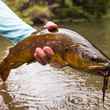

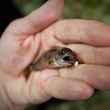




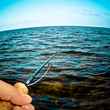








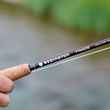







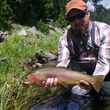
Comments